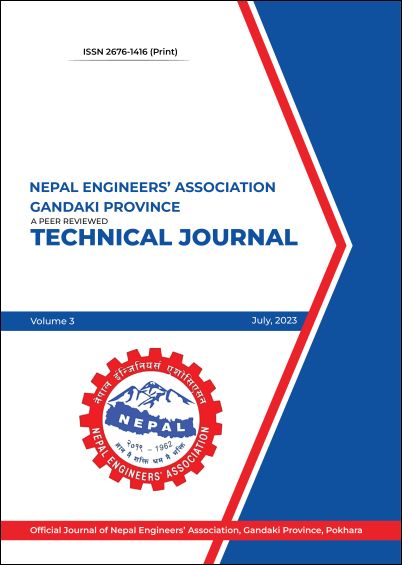Fracture Mechanics Induced by Drilling and Blasting in Underground Openings: Prevailing Practices and Studies
DOI:
https://doi.org/10.3126/tj.v3i1.61947Keywords:
Rocks, Drill and Blast Method, Failure Mechanics, In-situ Stress, Underground OpeningAbstract
This article presents the prevailing practices and literature review on the study of fracture mechanics of rock mass, during the construction of underground openings, by drill and blast method (DBM). The paper makes an introductory discussion on basic fracture and failure mechanics on the rock, followed by a review due to the blast-induced failure mechanism. The damage zone in drill and blast openings is discussed which is followed by the conclusions of the literature. DBM is a widely acceptable and broadly applicable approach in the underground construction method. The blasting damaged zones are classified as the borehole expansion zone, crushed zone, nonlinear fracture zone, and radial crack propagation zone. Blasting activities create stress waves in construction work, which fundamentally influence the fracture and failure mechanics of rock with pre-existing discontinuities, in-situ stress, and groundwater conditions. On the other hand, the cumulative action of subsequent explosion gas and stress waves defines the final damage limit and crack pattern map. Thus, it is of utmost importance to investigate the blast-induced fracture and failure mechanism to mitigate the instability in the underground openings.
Downloads
Downloads
Published
How to Cite
Issue
Section
License
© Technical Journal
Authors are required to transfer their copyright to the journal.




